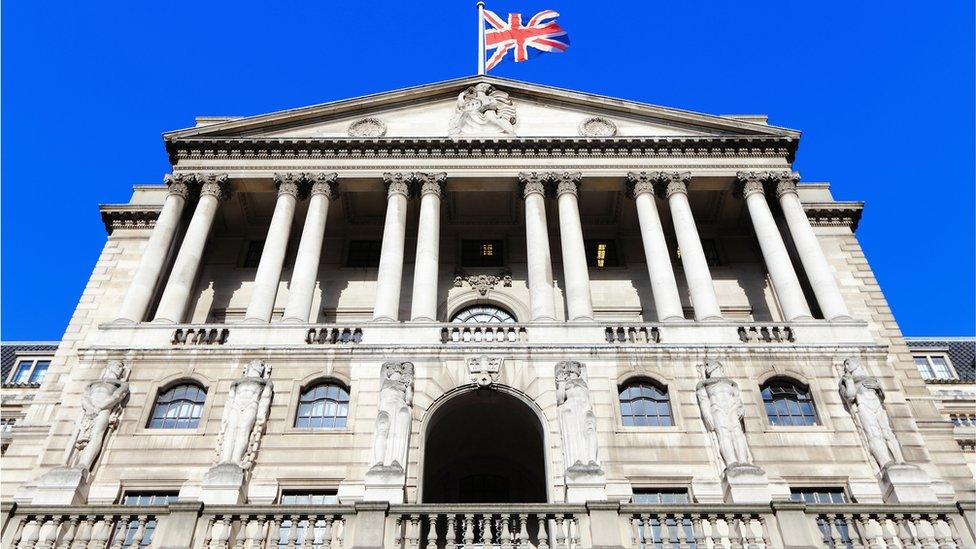Bank of England braces for downturn
- Published

The Bank of England has been wargaming a battle we're already fighting, to see how it might work.
So we shouldn't be surprised to find them modelling a drop in total output of 3% in the first three months of this year and 25% in the second quarter.
The scenario offers us no pleasant surprises in what this means for unemployment, rising from 4% to 9% of the workforce.
But it does teach some useful lessons. One is that limiting the impact is very closely aligned to the future course of both social distancing requirements and of government support to workers through the furlough scheme.
It foresees relaxation of the social restrictions starting in June and running for four months, and hints very heavily that government should align withdrawal of income support with the speed at which it allows society and business to open up.
Another useful lesson is that the banks are well placed to withstand this storm. That's thanks to the measures taken in the past decade to ensure they have big capital buffers in place. They are for a rainy day like this one.
So they can absorb impairments on loans, which could be substantial. This scenario looks to £19bn on corporate credit and £18bn on consumer credit. The latter is 15% of total consumer lending.
There would also be a £4bn hit from mortgages going sour, though that would be much worse without low interest rates and an estimated one seventh of mortgage customers taking a payment holiday.
And banks are also vulnerable to £38bn in bad loans to non-UK customers. That brings the total impairments under this scenario to £80bn.
As we like to say with due impartiality at the BBC, other scenarios are available. And this grim one ignores the possibility of a second surge in infection, requiring a return to tight control on social distancing and of economic activity. That would surely be much grimmer.